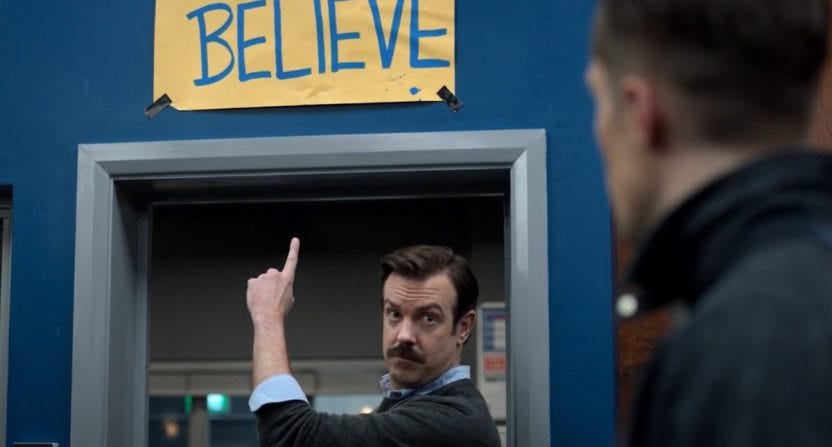Hope is a powerful force that fuels our dreams and aspirations. It’s the belief in what’s possible, the spark of optimism that lights our path. Recently, I revisited the heartwarming series “Ted Lasso” on Apple TV, and in particular, the season one finale titled “The Hope That Kills You.” This episode explores the idea that getting our hopes up can lead to disappointment, and it got me thinking about the delicate balance between hope and expectation.
Ted Lasso, the titular character, is known for his unwavering belief in the power of “believe.” His locker room prominently displays a sign with the word “believe” in bold capital letters. Ted’s philosophy centers around inspiring hope and nurturing positivity within his team, regardless of the odds. But how does this align with the notion of hope being potentially harmful?
In my view, it’s not hope itself that proves detrimental; it’s when hope morphs into expectation. Hope is a gateway to possibility, a recognition of our desires and aspirations. It’s the canvas upon which we paint our dreams, both realistic and fantastical. Hope, like dreams, is a source of inspiration and motivation.
The real danger arises when hope transitions into expectation, either consciously or subconsciously. When we expect a certain outcome, we invest a part of ourselves in that vision. Expectations become a tether to specific results, and when those expectations go unmet, it can be gut-wrenching. This shift from hope to expectation can be a treacherous path to navigate.
Throughout my life, I’ve been no stranger to hope and dreams. Living with SMA has taught me the importance of maintaining a hopeful outlook despite the challenges. However, I also learned from a young age that expectation, especially when it involves circumstances beyond our control, can be a double-edged sword.
The key distinction lies in the relationship between hope and expectation. Hope is an open embrace of possibility, a willingness to envision a brighter future. It provides the emotional sustenance to face adversity with resilience and determination. Hope allows us to soar.
On the other hand, expectation often carries the weight of entitlement. When we expect certain outcomes, we place a demand on the future that it may not fulfill. This can lead to disappointment, frustration, and a sense of betrayal when reality doesn’t align with our anticipated results.
In essence, it’s the shift from hope to expectation that can become a stumbling block. While hope keeps us afloat, expectation can drag us down into the depths of despair. It’s essential to recognize the difference between the two and maintain a healthy balance.
In Ted Lasso’s world, “believe” isn’t just a word on a locker room wall; it’s a philosophy that encourages his team to dream, hope, and aspire to greatness. It’s about embracing the journey, regardless of the outcome, and finding fulfillment in the pursuit of one’s goals.
So, as we navigate life’s twists and turns, let’s give ourselves permission to hope, to dream, and to be optimistic about the future. Hope is the wind beneath our wings, lifting us to new heights. However, let’s also be mindful of the dangers of expectation, especially when it involves factors beyond our control. By doing so, we can maintain our mental well-being and truly savor the beauty of hope’s boundless possibilities.

wonderful, I hope you keep writing! 🙂
Thanks so much Jason!